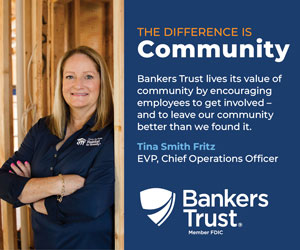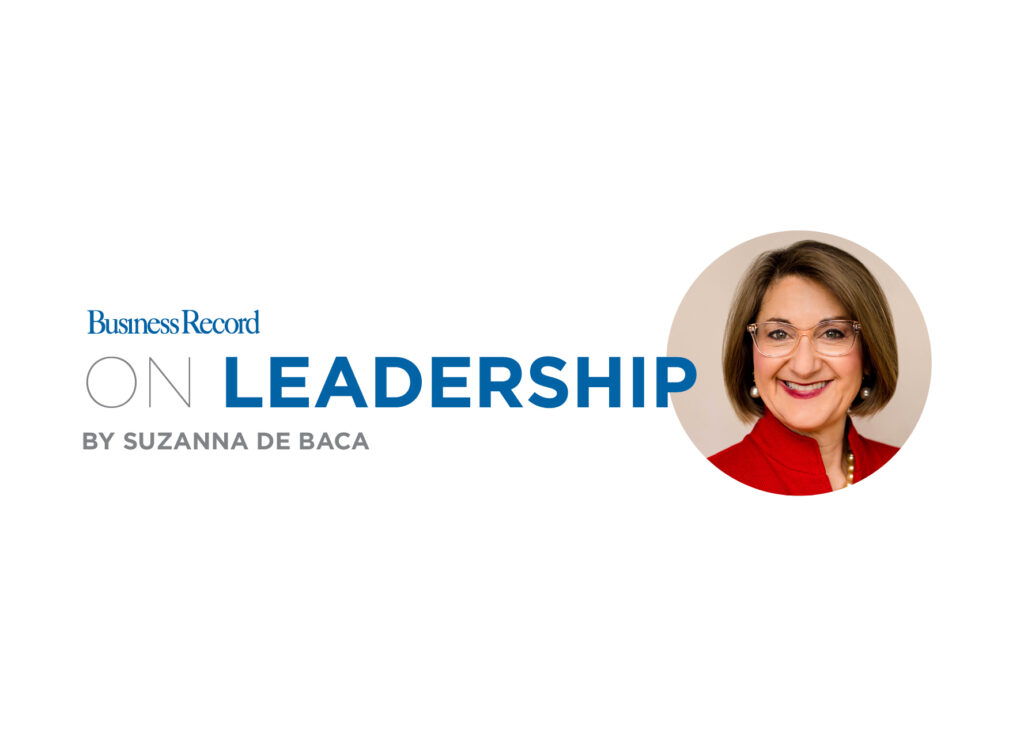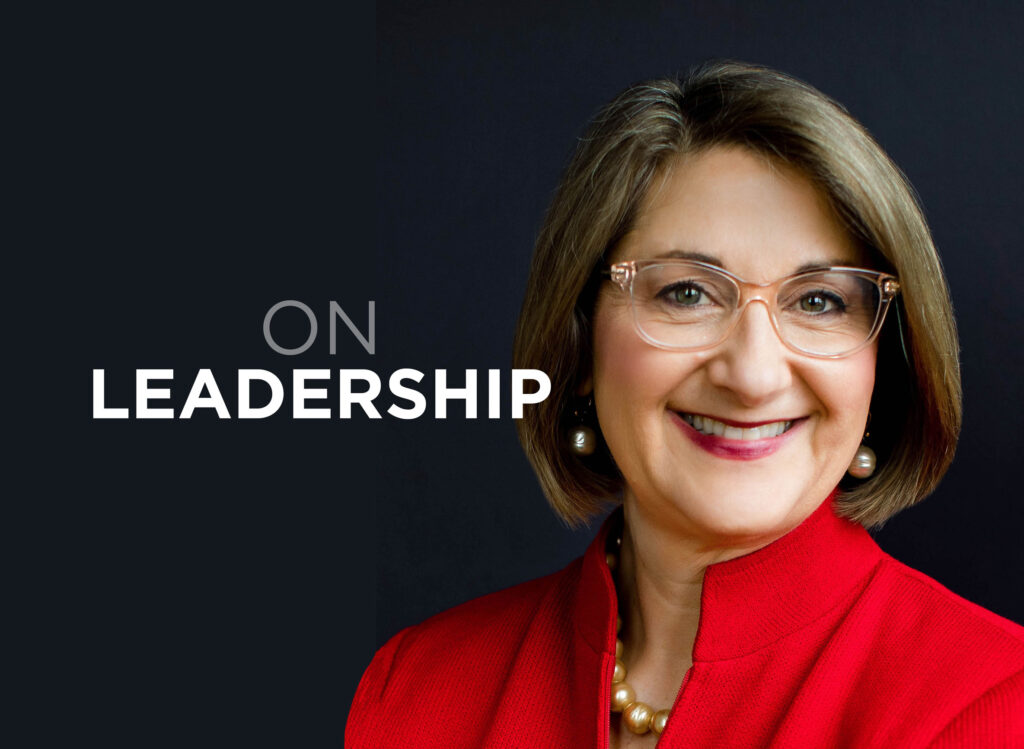On Leadership: When life comes to work: Managing personal stress as a leader

This is part of an ongoing series on mental health and leadership.
For nearly five years, I served as the primary caregiver for my beloved elderly aunt, who had dementia. I relocated her across the country to live near my mother and me, navigated complex medical decisions, found suitable memory care and visited regularly until she passed away. During this emotionally taxing time, I was CEO of one company and then transitioned to lead another. None of these challenges with my aunt were work-related, yet they profoundly affected my time, energy and focus. Leadership duties didn’t pause when life demanded attention.
During this emotional period of caregiving and watching my aunt decline, I leaned on support systems — family, friends and trusted colleagues — set compassionate boundaries, granted myself grace when I couldn’t do everything “right” and shared context with colleagues so they understood my decisions and availability. I tried to be intentional in managing my health and my schedule so I could be an effective leader and healthy person, but it was not always easy.
That experience came full circle during a recent panel I moderated on leadership and mental health. Business and community leaders spoke candidly about the personal stressors that had deeply impacted their mental health and their capacity to lead: the death of partners, parents and loved ones; divorce; caregiving responsibilities; the mental toll of supporting children through challenges and crises; their own health issues. These stories made clear that personal stress is not an outlier in leadership. It’s a reality.
Leaders experiencing personal stress is normal
In addition to stories shared by leaders, studies also confirm what many leaders have long felt but rarely say out loud: Personal stress isn’t a separate issue from leadership; it’s central to it:
- A Harvard Business Review podcast episode, “Consumed by Caregiving” from November 2024 features an executive who paused her career for caregiving, only to discover the break extended for more than a year due to family crises.
- In “Your Employees Are Also Caregivers. Here’s How to Support Them,” a Harvard Business Review article by Gretchen Gavett, we learn that 73% of U.S. employees carry caregiving responsibilities – many of whom are in leadership roles.
- A Forbes article from April of this year called “Leadership Burnout Is Surging. One Overlooked Habit Can Help,” by Julian Hayes II reports that 71% of leaders feel significantly higher stress, 54% fear burnout and 40% have considered stepping away from leadership to preserve their well-being.
Integrating research into real‑world leadership
These data points echo the insights from the panel, where leaders shared that personal stress – grief, caregiving, illness, relationship strain – frequently impacts their professional roles.
At the core is a paradox: as leaders, we often prioritize business crises over personal ones. But the research makes clear that caregiving duties and family strain are no less strategic in their impact than market shifts or product failures.
Leading through life’s demands
As leaders, we wear multiple hats – strategist, mentor, decision-maker – and often caregiver. But too often we feel we must leave the personal at home. My own story with my aunt is just one example that personal life always finds its way to our professional doorstep. The cost of pretending otherwise? Lower energy, fractured focus, strained team dynamics.
But leading through life’s demands honestly and intentionally benefits not just us, but our organizations. When we model vulnerability and boundary-setting, we create cultures where teams feel seen and safe. And science backs that up.
How can we as leaders manage personal stress effectively?
- Normalize full humanity. Acknowledging grief, caregiving or personal crises as part of your leadership story isn’t a vulnerability – it’s authenticity. It signals to others that their lives matter, too.
- Treat personal stress as strategically as you treat business risk. If you wouldn’t ignore a revenue shortfall, don’t ignore caregiving burnout. Seek professional support, reallocate bandwidth and actively protect your emotional reserves.
- Communicate with compassion. Context matters. Saying, “I’m managing a family health emergency” sets realistic expectations and fosters empathy among your colleagues.
- Lean into support networks. Support isn’t a sign of weakness – it’s wisdom. Executive coaching, therapy, trusted peers, friends or EAPs can sustain you through tough periods. And if you need a higher level of professional support for mental health, do not hesitate to seek it.
Lead with your whole life
Leadership is not about compartmentalizing the personal and professional; it’s about integrating them with integrity. Life will walk with you into the boardroom, uninvited but unavoidable. Rather than resist it, embrace the opportunity to lead with wholeness. When leaders own their humanity – not as a liability but as a leadership asset – they cultivate more resilient teams, more authentic cultures and more sustainable careers.
The future of leadership isn’t about perfection under pressure; it’s about professional yet real presence amid complexity. Let’s lead like life depends on it – because, after all, it does.
Understanding the difference between stigma and discrimination
In response to a thoughtful note from a reader, I’d like to offer an important clarification in our ongoing conversation about mental health and leadership: the distinction between stigma and discrimination. These terms are often used interchangeably, but they reflect fundamentally different realities – and understanding that difference is critical to promoting mental health with both compassion and precision.
Stigma refers to the negative attitudes, stereotypes or assumptions people may hold about mental illness. It operates on both internal and social levels – often subtle, but deeply damaging. A leader might hesitate to share their mental health challenges for fear of being labeled “weak” or “unstable.” That fear, rooted in cultural bias, is stigma in action.
Discrimination, by contrast, is behavioral and systemic. It’s the unfair treatment that stems from those stigmatizing beliefs – being passed over for a promotion, excluded from projects or treated differently due to a known or suspected diagnosis. Discrimination is often embedded in workplace practices or policies, and it can have legal consequences.
This distinction is more than semantics – it’s central to how we respond to mental health in professional and social contexts. Challenging stigma is about shifting narratives and reshaping culture. Confronting discrimination is about holding systems accountable and demanding structural change. Both are vital, and both require different tools.
It’s also worth noting that many mental health professionals are intentionally moving away from using the word stigma altogether, recognizing that it can inadvertently reinforce feelings of shame or victimization. As research published in BMC Psychiatry and other journals has noted, language matters: using person-centered, non-pathologizing terms can reduce harm and empower individuals seeking support.
To the reader who raised this distinction – thank you. Your feedback reinforces the need to approach these conversations with care and intentionality.
As leaders and peers, let’s commit to using precise, respectful language and to fostering environments where mental health is not only acknowledged, but actively protected. The words we choose shape the culture we build – and the people within it.

Suzanna de Baca
Suzanna de Baca is a columnist for Business Record, CEO of Story Board Advisors and former CEO of BPC. Story Board Advisors provides strategic guidance and coaching for CEOs, boards of directors and family businesses. You can reach Suzanna at sdebaca@storyboardadvisors.com and follow her writing on leadership at: https://suzannadebacacoach.substack.com.






